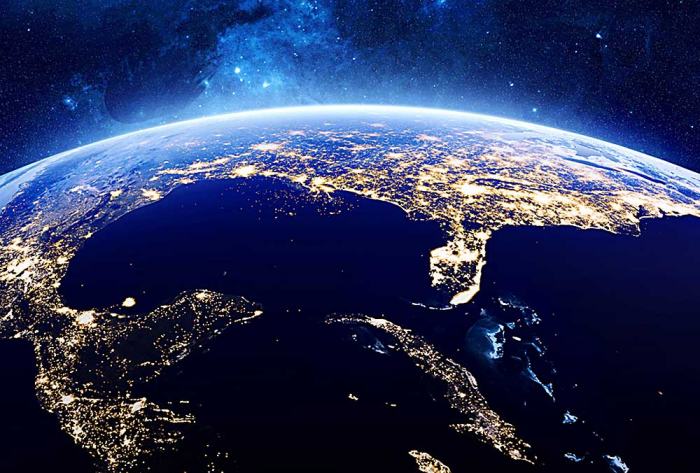A hole was found in the ozone layer above Antarctica in the 1980s as a result of harmful chemicals being pumped into the atmosphere.
This has allowed large amounts of ultraviolet light to reach Earth unabated and has been linked to an increase in skin cancer diagnoses.
Severe bans on the manufacture of these products has seen the hole in the ozone recover at a rate of one to three per cent per decade, scientists have now found.
This process reverses the damage done by years of dangerous depletion and is expected to be fully repaired by the 2060s, the study revealed.
The study was a four-yearly review of the Montreal Protocol, a 1987 ban on man-made gases that damage the fragile high-altitude ozone layer.
It found long-term decreases in the amount of these gases in the atmosphere and that the stratospheric ozone was recovering.
'The Antarctic ozone hole is recovering, while continuing to occur every year, the report said.
'As a result of the Montreal Protocol much more severe ozone depletion in the polar regions has been avoided.'
The Antarctic ozone hole was expected to gradually close, returning to 1980 levels in the 2060s, the report said.
'Evidence presented by the authors shows that the ozone layer in parts of the stratosphere has recovered at a rate of 1-3 per cent per decade since 2000,' UN Environment and the World Meteorological Organisation said.
'At projected rates, Northern Hemisphere and mid-latitude ozone is scheduled to heal completely by the 2030s followed by the Southern Hemisphere in the 2050s and polar regions by 2060.'
The UN had already hailed the success of the Protocol, which banned or phased out ozone depleting chemicals, including chlorofluorocarbons (CFCs).
CFCs were once widely used in refrigerators and spray cans and were found to be the main reason behind the loss of the ozone layer.
The report said it was the first time the Antarctic ozone hole had shrunk in size and depth since 2000.
The study also looked at the thinning of the ozone layer in the Arctic and found the annual variations were much larger.
This made it harder for the researchers to confirm if there had been a definite recovery.
Most of the banned gases have been phased out but the report found at least one violation of the protocol.
Production and emissions of CFC-11 had unexpectedly increased from eastern Asia since 2012 but the country or countries have not yet been identified.
If CFC-11 emissions continued at the same rate the presence of ozone-depleting chemicals will return to 1980 levels with a seven and 20 year delay to mid-latitude and polar regions.
Earth's ozone layer acts like a sunscreen, shielding the planet from potentially harmful UV radiation that can cause skin cancer, cataracts, and damage wildlife.
There is a debate over how much of Australia's skin cancer rate stems from a weakness in the earth's ozone layer.
The so-called 'ozone hole' was especially big over Australia when anti-skin cancer efforts began in the 1980s.
Daily Mail
More about: ozone
















































